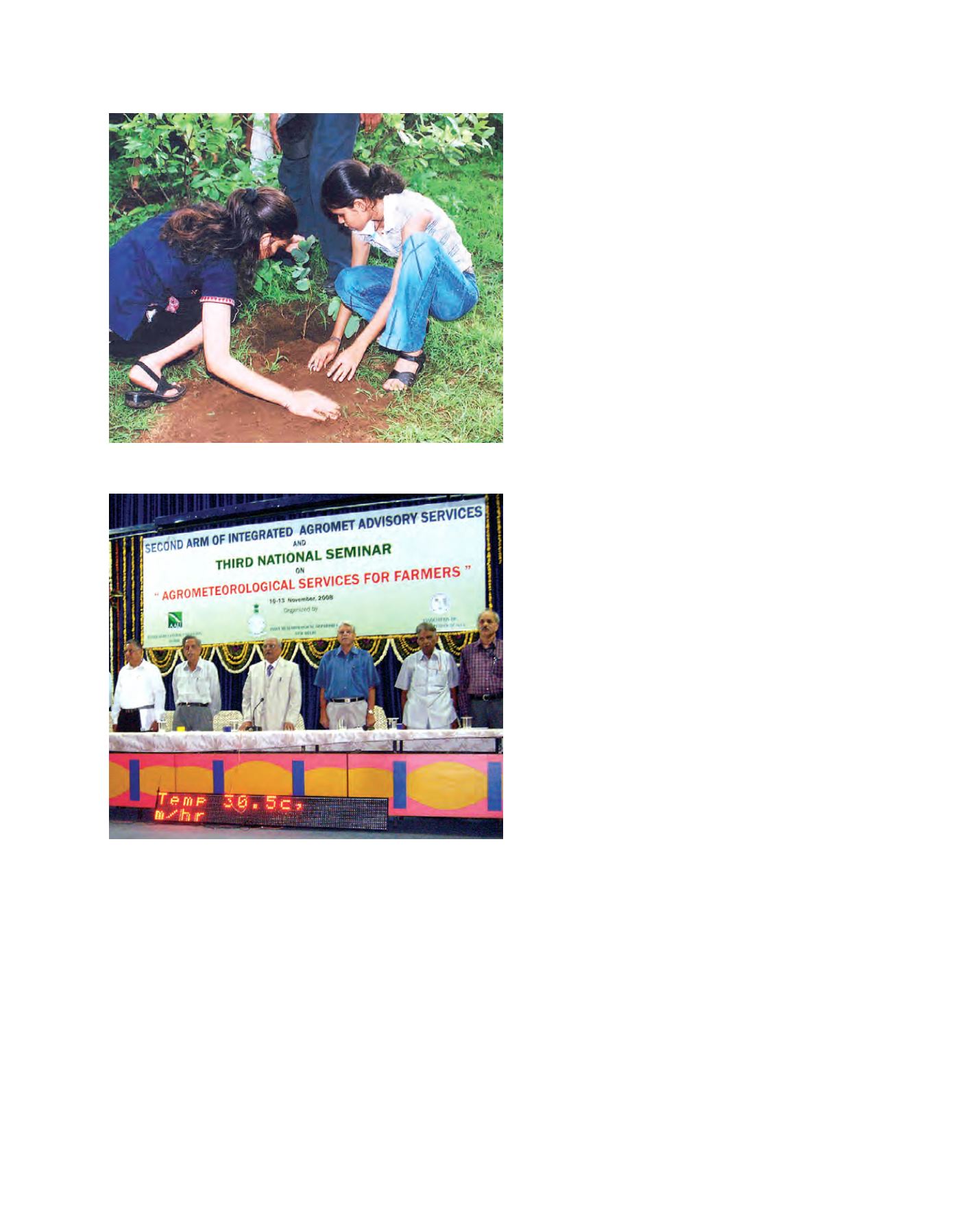

[
] 70
G
overnance
and
P
olicy
current climate risks and soil and moisture conservation, as well
as helping to develop traditional water resources in the village. The
service also helps in the development of pasture land and other
capacity building programmes related to mitigation. All this is done
in partnership with the district authorities and non-governmental
organizations through a participatory programme including both
villagers and farmers.
Indian initiatives focus particularly on development-oriented
drought mitigation and water management, as well as animal
husbandry programmes. It is also concerned with strengthening
research for enhancing adaptive capacity and mitigation potential.
In addition, it promotes the government-run Agriculture Insurance
Company, which protects farmers from the vagaries of the weather.
Societal response
The most effective way to address climate change is to
adopt a sustainable development pathway. This can
be achieved by shifting to environmentally sustain-
able technologies and by promoting concepts such as
energy efficiency, renewable energy, forest conserva-
tion, reforestation and water conservation. The main
issue for developing countries is reducing the vulner-
ability of their natural and socioeconomic systems to
the projected effects of climate change.
India is already expending over two per cent of its
GDP on programmes that address climate adapta-
tion. The Government of India has made many policy
decisions aimed at reducing risks and enhancing the
adaptive capacity of the most vulnerable sectors and
groups in the country. The ultimate target of such
efforts is to secure livelihoods and alleviate poverty.
Adaptation schemes currently in progress include: 6 on
disaster management; 19 on health improvement and
prevention of disease; 22 on crop improvement and
research; 19 on drought proofing and flood control; 6
on risk financing; 12 on forest conservation; and 30 on
poverty alleviation and livelihood preservation.
Specific programmes fall under all sectors and include:
the National Rural Employment Guarantee Act; the
National Agricultural Insurance Scheme; formulation of
the coastal regulation zones; and the Participatory Forest
Management Programme.
Adaptation and mitigation mechanism
The Government of India is in the process of setting
up a National Action Plan on Climate Change, which
contains eight aims focused on energy efficiency. The
Action Plan is a response to India’s current vulnerability
to climate change, and represents its strong commitment
to sustainable development though energy efficiency
and the conservation of natural resources. Two factors
form the basis of this promise: India’s heritage of an
environmentally-friendly culture and recognition of its
international responsibility as a developing country.
These actions will enable India to engage constructively
with global efforts to preserve and protect the environ-
ment through practical solutions, for the benefit of all
humankind.
A state-level advisory council – incorporating
experts from various organizations including IMD –
conveys specific advice on adaptation issues, providing
uniformity in policy making across the country. India’s
meteorological services and the observing systems
which support them are strengthened as frequently as
technological advancements allow to ensure maximum
economic, social and environmental benefits. India is
not obliged to cut emissions under the Kyoto Protocol,
nevertheless it has a range of actions in place to
reduce GHG emissions and improve energy efficiency
including: setting up a Bureau of Energy Efficiency;
reforming its power sector; initiating afforestation
and conservation projects; and using cleaner and less
carbon-intensive fuel for transport.
11
Climate change and societal response: afforestation
Image: IIT Bombay
Climate change and societal response: capacity building for community base
adaptation to climate change
Image: Anand Agricultural University, Anand
















